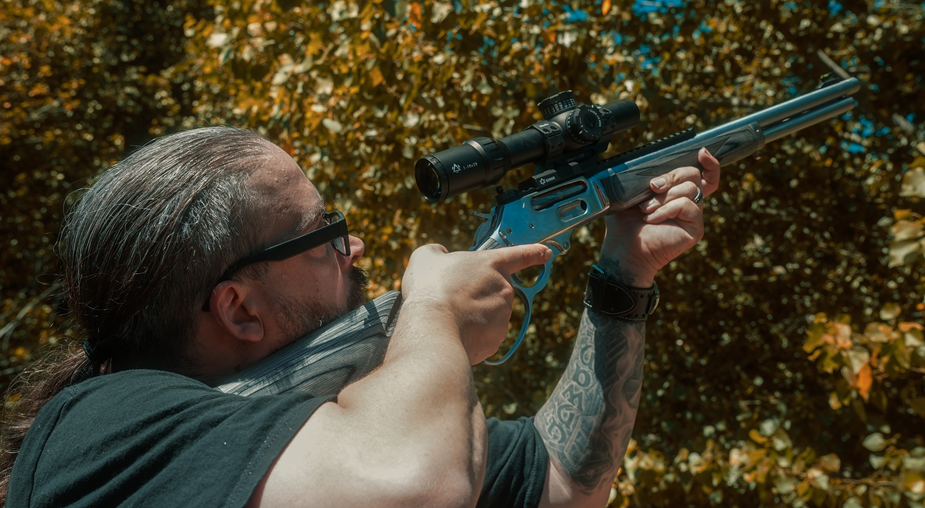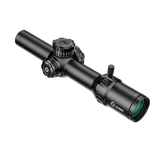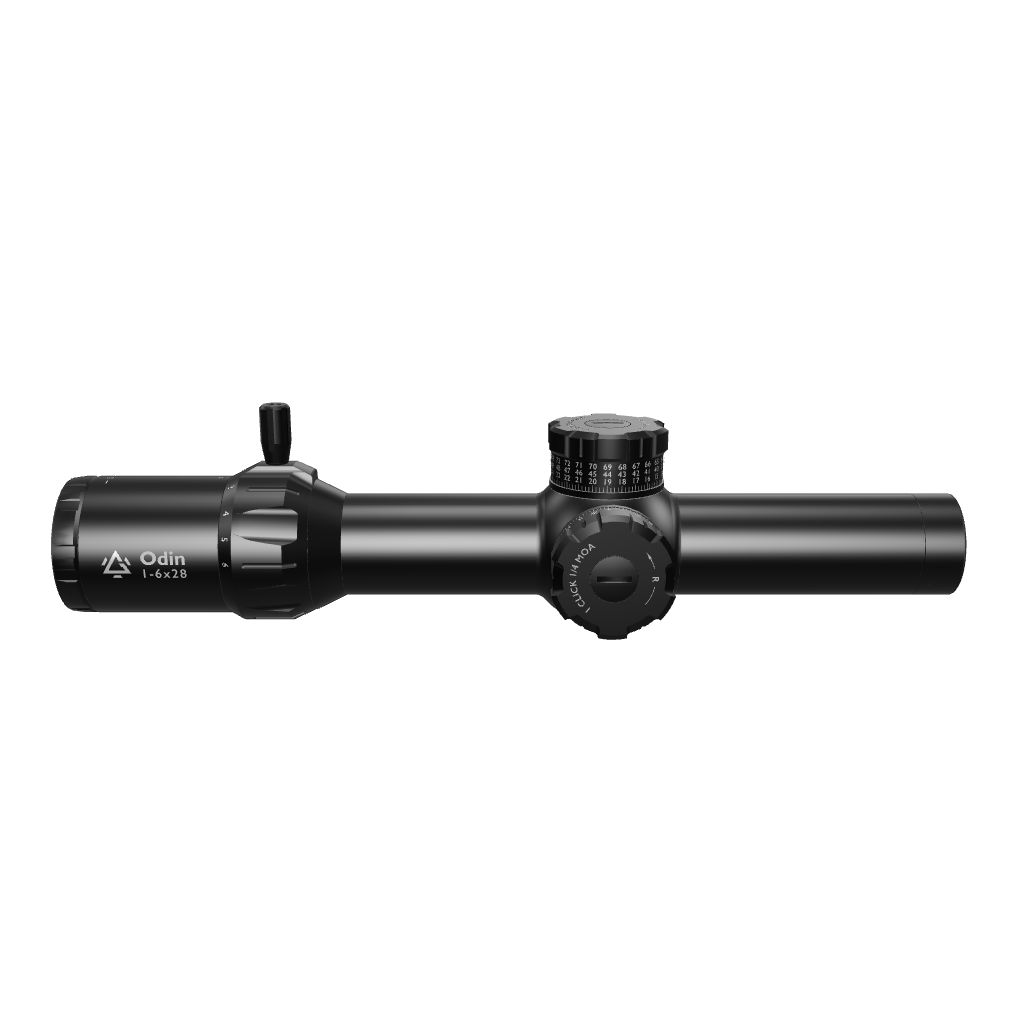RIFLE SCOPE PARALLAX EXPLAINED: 5 KEY THINGS TO KNOW
Everyone who consistently uses a rifle scope, especially an LPVO scope, knows exactly what scope parallax looks like and how it can be a problem. LPVO parallax is an even bigger obstacle, especially at higher magnifications. However, only a few can properly explain why it happens, and even fewer understand how to solve it effectively.
Well, the first step to resolving scope parallax is to understand what causes it, and that is precisely what we will do in this blog. So, let’s break down parallax in a rifle scope and help you get rid of this inconvenience.
WHAT IS PARALLAX ON A RIFLE SCOPE?
Experts agree that the most effective way to approach parallax on a rifle scope is to understand what causes it. When you understand how scope parallax happens, it is much easier to take appropriate measures to prevent or rectify it. So, what is parallax on a rifle scope?
- Rifle scope parallax is a visual effect that occurs when the reticle (crosshairs) of your scope and the target are not perfectly aligned on the same focal plane.
- This misalignment, no matter how small, causes the reticle to appear to shift relative to the target when you move your head behind the scope.
- The result is that your point of aim becomes inaccurate, and the greater the distance between yourself and the target, the more inaccurate your aim gets.
For example, if you're aiming at a target but your eye isn't perfectly centered behind the scope, the reticle might seem to move even if the rifle stays still. At this point, it is impossible for your shot to hit the intended point of impact. This misalignment is due to parallax.
How Do Different Scopes Handle Parallax?
Not all rifle scopes deal with parallax in the same manner. Most either have a fixed parallax or adjustable parallax (often referred to as "side focus" or "adjustable objective" scopes).
- Fixed parallax means that the scope's parallax is set to a specific distance (usually 100 or 150 yards), and it cannot be adjusted by the shooter. At that particular range, parallax error is completely eliminated, allowing the crosshairs to align perfectly with the target at the set distance.
- With adjustable parallax, you can eliminate parallax errors by yourself. Such scopes have specific parallax adjustment features like a knob or an AO ring that enables you to carefully match the reticle and the target’s focal plane at different distances.
Adjustable parallax is interesting because it can follow different procedures depending on the design of the scope in question. The standard procedure, of course, is to use the parallax adjustment knob or an AO ring.
However (as we shall see later), some modern optic brands are coming up with more creative ways to tackle parallax adjustment.
How Does Parallax Look Like in an LPVO?
Most LPVOs do not have a dedicated parallax adjustment feature, and this can be a little bit of a surprise if you are accustomed to HPVOs or tactical scopes with a dedicated OA ring for parallax adjustment.
Where there is no dedicated feature for parallax adjustment, it is often safe to assume that the scope has a fixed parallax setting, which is true for LPVOs. Parallax is often around 100 or 150 yards. This means they are optimized to eliminate parallax at those distances, and there is no built-in mechanism to adjust parallax at different ranges.
The fact that an LPVO has fixed parallax settings does not mean that you will never run into parallax issues with any LPVO. If you are using one with higher magnification capabilities, you might have to know how to work your way around scope parallax.
Take an Example
The first two LPVO models in Gunnr's ODIN series are the Odin 1-6×28 FFP and the ODIN 1-8×24 FFP, which allow maximum magnification of 6x and 8x, respectively. With these two models, the fixed parallax settings should suffice to eliminate any parallax error.
The third model, however, is the ODIN 1-10×28, which goes up to 10x magnification. At such increased levels of magnification, fixed parallax might not be so effective when shooting over an extended range. Even a slight error in parallax can cause a shot to miss by inches or more.
HOW THE ODIN SCOPES DEAL WITH PARALLAX
So, how do you handle a scope like the ODIN 1-10×28, which has such high magnification? Well, at least for this scope, it is rather simple. The key to resolving parallax issues with the 10x ODIN LPVO lies in the rear lens. This lens is specially designed to be adjustable, and this feature is crucial when it comes to eliminating parallax.
Here are some simple steps to follow:
- Look through the scope and aim at your target.
- Shift your head slightly up, down, and side to side without moving the rifle.
- If the reticle appears to move relative to the target, parallax is present.
- Move the rear lens slightly and realign until the target and the reticle are on the same focal plane. You’ll know parallax is corrected when the reticle stays perfectly still, even as you move your head.
Remember, parallax is, at its core, a misalignment issue. By eliminating parallax, you ensure that any slight movement of your eye doesn’t affect the reticle’s position relative to the target, which improves your accuracy.
More About ODIN Scopes
Just like the rear lens helps with parallax issues, Odin LPVOs are specially designed with features that distinctly help overcome common LPVO issues. These optics from Gunnr have quickly taken off, and the feedback from customers and expert reviewers has been amazing. Here are some features ODIN scopes offer that are unique but immensely practical.
A Tree Reticle
With its extended 1 MOA hash marks, these reticles of reticle facilitates accuracy for windage and elevation adjustments. With an ODIN LPVO, you can consistently hit your mark with precision at greater distances.
Zero Stop
Once you key in your zero, it remains locked and stable. The zero-stop mechanism prevents the turret from moving past the pre-set zero and makes it simple to return to your original zero.
Locking Turrets
With an ODIN SCOPE, there is on risk of settings shifting as you aim or shoot. The locking turrets keep your windage and elevation settings securely in place to avoid any unintentional shifts.
The Lenses are Made of German Schott Glass
These optics feature an extra Low Dispersion (ED) glass element from German SCHOTT with advanced fully multi-layer coatings. The images are clean and crisp, with no chromatic aberration. You can easier to spot even every fuzzy detail and stay locked onto your target, whether at dawn, dusk, or mid-day.
They are Built from 7075 Aluminum Alloy
ODIN scopes are built to withstand temperatures from -59°F to 149°F. That is thanks to their robust 7075 aluminum alloy elements. ODIN scopes have passed rigorous salt spray tests to offer outstanding corrosion-resistant performance in harsh conditions.
With an IP67 rating, Odin scopes are protected from dust and water. Whether you're caught in a downpour or surrounded by dust, they perform reliably to keep you on target.
Final Thoughts on Rifle Scope Parallax
Mastering parallax adjustment is one of the many skills that separate a good shooter from a great one.
If you’re investing in a high-quality rifle scope for long-range or competitive shooting, opt for an adjustable parallax. This feature will give you the flexibility to shoot at a variety of distances without sacrificing accuracy.
And remember, always test your parallax settings in real-world shooting conditions to fine-tune your setup.
With a solid understanding of scope parallax and proper adjustments, you'll be better equipped to hit your targets consistently, regardless of the range. Whether you’re on the hunt or at the range, mastering parallax can make all the difference.







